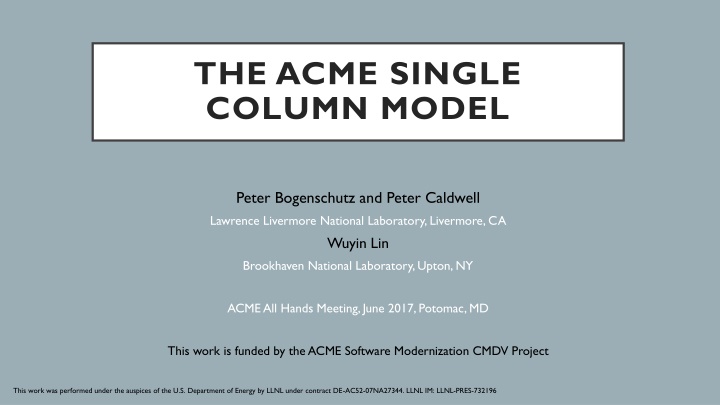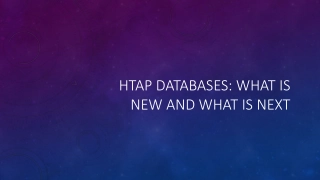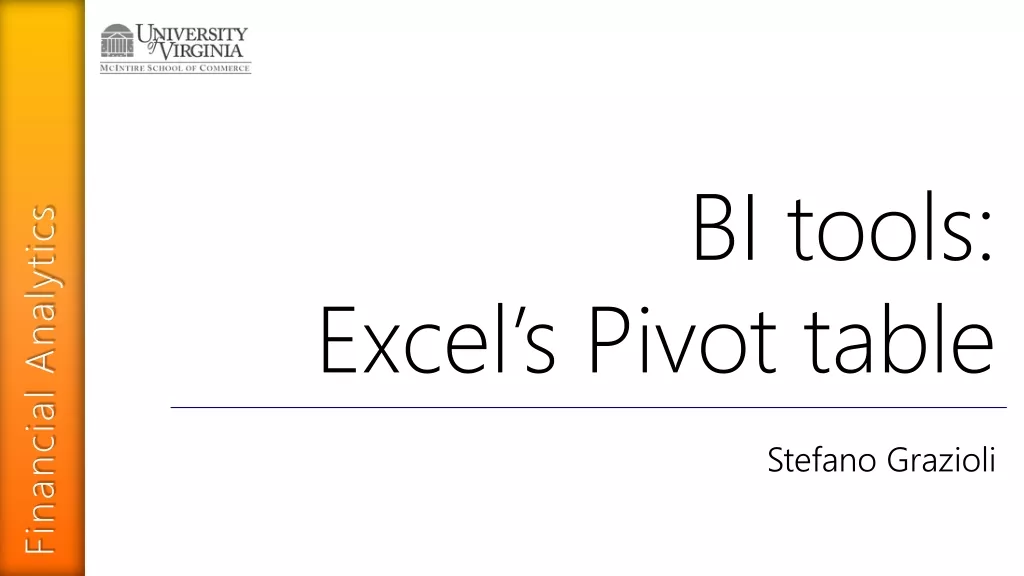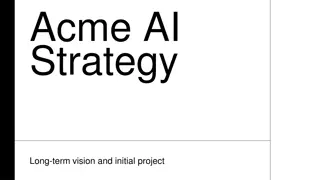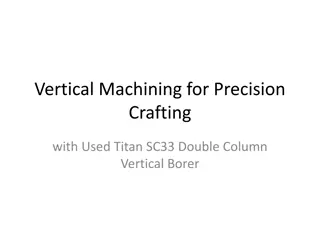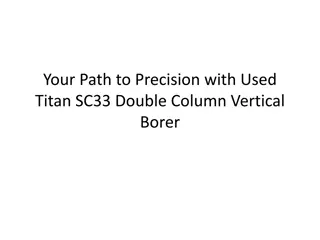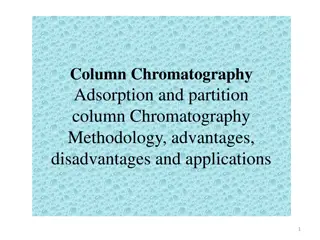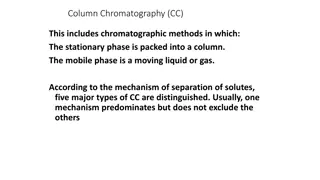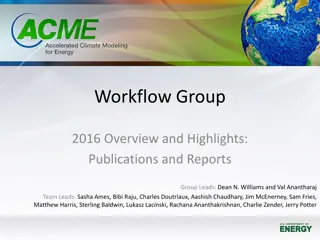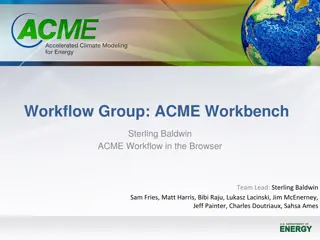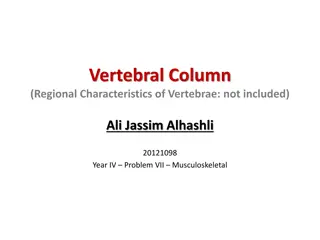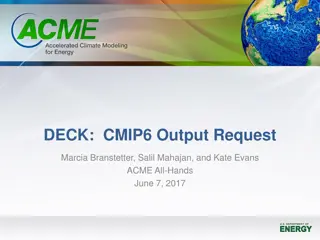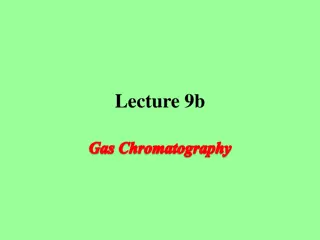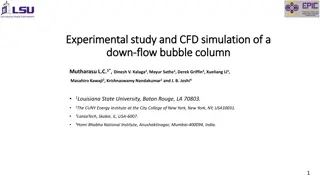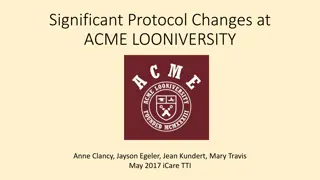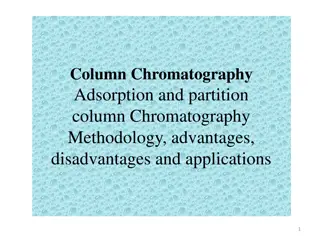ACME Single Column Model at All Hands Meeting
Peter Bogenschutz and Peter Caldwell from Lawrence Livermore National Laboratory, together with Wuyin Lin from Brookhaven National Laboratory, presented the ACME Single Column Model at the ACME All Hands Meeting in June 2017 in Potomac, MD. This work, funded by the ACME Software Modernization CMDV Project, showcases the collaborative efforts in software modernization and modeling within the ACME framework.
Download Presentation

Please find below an Image/Link to download the presentation.
The content on the website is provided AS IS for your information and personal use only. It may not be sold, licensed, or shared on other websites without obtaining consent from the author.If you encounter any issues during the download, it is possible that the publisher has removed the file from their server.
You are allowed to download the files provided on this website for personal or commercial use, subject to the condition that they are used lawfully. All files are the property of their respective owners.
The content on the website is provided AS IS for your information and personal use only. It may not be sold, licensed, or shared on other websites without obtaining consent from the author.
E N D
Presentation Transcript
THE ACME SINGLE COLUMN MODEL Peter Bogenschutz and Peter Caldwell Lawrence Livermore National Laboratory, Livermore, CA Wuyin Lin Brookhaven National Laboratory, Upton, NY ACME All Hands Meeting, June 2017, Potomac, MD This work is funded by the ACME Software Modernization CMDV Project This work was performed under the auspices of the U.S. Department of Energy by LLNL under contract DE-AC52-07NA27344. LLNL IM: LLNL-PRES-732196
SINGLE COLUMN MODEL (SCM) The SCM is a mode of the ACME model where a single column of the atmosphere is run in isolation with prescribed atmospheric dynamics. Land fluxes can be prescribed or the land model can be run in this configuration The SCM is a very important tool for development of model parameterizations and can also be useful for model assessment and tuning It allows developers to easily test a wide variety of model changes Large number of SCM/GCSS cases exist that span a wide range of climate regimes
EXAMPLES OF SCM USEFULNESS Simulated cloud amount Zhang and Bretherton (2008) Zhang and Bretheron (2008) used the SCM to show that cloud feedbacks in CAM3 were controlled by unphysical oscillations caused by interactions between convection and resolved-scale processes Bogenschutz et al. (2012) used SCM to perform vertical resolution sensitivity tests with CAM with a new parameterization (CLUBB)
SCM WOES Though a useful tool, the SCM has received minimal support. Often times, this results in a broken version of the model, which can be time consuming to sort out. Scripts to run the SCM are often passed from user-to-user. Can result in improper case setups and unscientific solutions. With the upgrade to a modal aerosol model, aerosols by default are initialized to zero. This can significantly effect the SCM solution. Lack of idealizations required for apples-to-apples comparison with select large eddy simulation (LES) intercomparison studies. The ACME SCM runs with a dynamical core (Eulerian) which is not the same as the full model (Spectral Element)
ACME SCM AEROSOL SPECIFICATION ACME SCM initializes all aerosol mass mixing ratios to zero Nd from DYCOMS-RF02 (drizzling marine stratocumulus) This results in unrealistically low aerosol concentrations until surface emissions loft sufficient aerosol (process can take several days) Most GCSS boundary layer cloud cases are hours in length In addition, with ACMEv1 shallow convective clouds are tied to the MG microphysics From Lebassi-Habtezion and Caldwell (2014) SOLUTION: We implemented the modifications presented in Lebassi- Habtezion and Caldwell (2014)
ACME SCM AEROSOL SPECIFICATION OPTIONS Aerosol specification may be accomplished via one of three methods as documented in BLP2014: Fix cloud-droplet (Nd) and ice crystal (Ni) number concentration Prescribed aerosols Prescribes mass mixing ratios of aerosol species based on climatologies Derived from a long prognostic-aerosol run Observed mixing ratios Apply the observed mixing ratios and size distributions to the aerosols (where available) IT IS IMPORTANT to run with one of these three options (ACME SCM scripts will make you pick one and will have a default value for supported cases). When in doubt, run with prescribed aerosols.
ACME SCM IDEALIZATIONS Idealizations have been (or will be) implemented to allow the user to run with GCSS specifications for some cases Turn off shortwave or longwave radiation Turn off microphysics computation (not yet on master) All idealizations controlled by namelist flags Idealizations will be added as they are needed and options will be set to the appropriate default in the run script for that particular case Support will be added for Lagrangian type cases (i.e. CGILS)
SCM CASE LIBRARY Confluence How-To page documents the SCM cases library, in addition to obtaining relevant scripts https://acme- climate.atlassian.net/wiki/display/Docs/ACME+Single- Column+Model+Case+Library VERIFIED CASES: ARM95, ARM97, DYCOMS2-RF02, MPACE-B, RICO, TOGA-COARE, TWP-ICE, GATE UNVERIFIED CASES: ARM-GCSS, ATEX, BOMEX, DYCOMS2- RF01, SPARTICUS, RACORO COMING SOON: MC3E, MAGIC, CGILS Want a case not listed? Want to contribute a case? Let us know! Verified Case = We have checked that the run script and IOP files for the cases below are free of obvious bugs and design flaws when run in ACME.
I WANT TO RUN ACME SCM! WHAT DO I DO? Check out ACME master (must be master post May 11, 2017) Visit the ACME Case Library Page (confluence, under How-To articles) to grab a script for a case you would like to run Edit the User Defined Settings and run! Scripts have been tested on Edison, Anvil, and Livermore Computing but should work on any ACME supported machine A companion How-to page exists for running/compiling the SCM (though the scripts are the best resource)
ACME SCM Diagnostics Package (coming soon) Profiles Written in Python Generates hundreds of plots in seconds for any number of simulations Timeseries Support for LES and Observational comparison coming soon
WHERE ARE WE GOING? Slab-ocean SCM capability Functionality for Lagrangian cases (i.e. MAGIC, CGILS) Hardened ACME SCM diagnostics Dependence of SCM on Eulerian dynamical core removed via either: Setting up the SCM to work with the SE dy-core Runing the GCM with 6 identical columns and prescribed dynamics Ability to extract boundary conditions from a GCM run and use it to exactly reproduce the behavior of a single column in SCM mode (a.k.a. global-IOPs ) Answer the science question Does ACME SCM provide a proxy of the full model? Why or why not?
